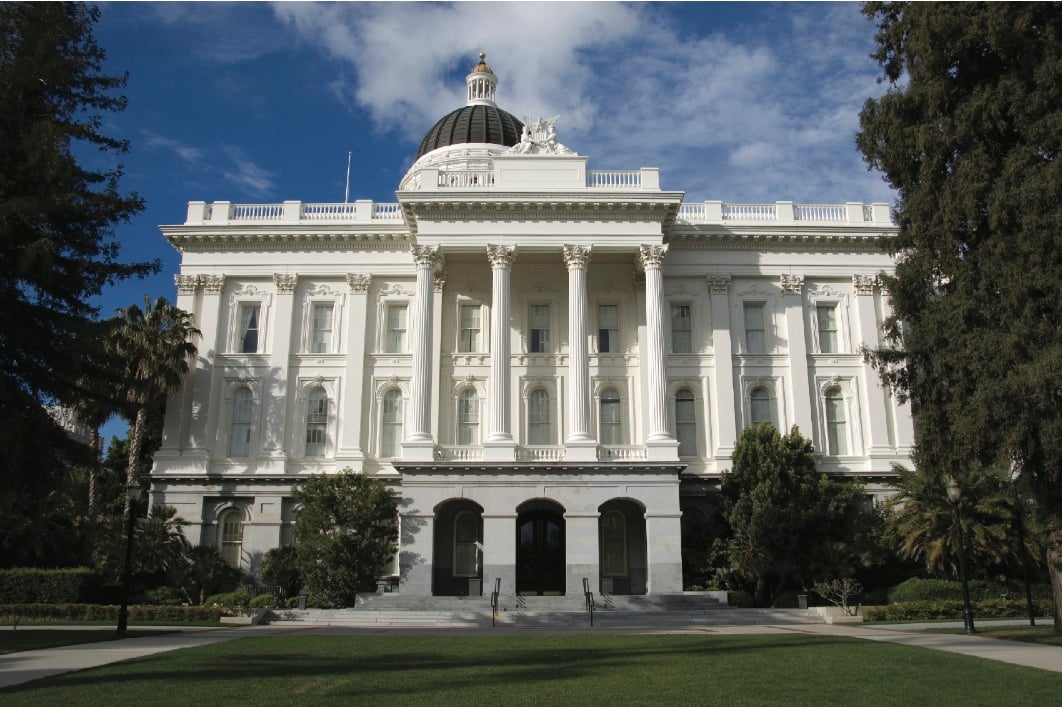
In his State of the State speech in January, Gov. Jerry Brown announced his Administration’s determination to extend California’s climate and energy goals to 2030. The Governor called for strengthening the state’s renewable and energy efficiency goals and for steep reductions in the use of petroleum, capturing the goals in a catchy formula: 50-50-50. Senate President Pro Tem Kevin de León took up the challenge and introduced SB 350. The bill, supported actively by AEE, called for raising the RPS to 50%, increasing efficiency in existing buildings by 50%, and reducing petroleum usage by 50%. It came down to literally the 11th hour of the session, but the groundbreaking bill passed the legislature on September 11 – minus the oil-reduction goal. Still, it was a big step forward for California’s already nation-leading energy and climate policies – and on reducing petroleum use, Gov. Brown vowed to fight another day.
After a swift ride through the Senate, the bill faced strong challenges in the Assembly. A number of Assemblymembers expressed concerns over the petroleum section of the bill. With the oil industry mounting an aggressive and well-funded advertising campaign that falsely raised the specter of gas rationing and higher pump prices, some members pushed for substantial changes to the bill, including adding legislative oversight of plans for petroleum reduction from the California Air Resources Board (CARB), which is responsible for implementing the law.
Prior to a floor vote, leaders in both houses and the Governor’s office worked to overcome opposition, but in the end a deal couldn’t be reached. The petroleum section had to be sacrificed in order to pass the rest of the bill, which included the critical renewable and energy efficiency mandates. With just hours to spare before the deadline, the bill passed the Assembly floor on a 52-27 tally, even gaining two Republicans votes. With the revised bill headed to his desk for signature, Gov. Brown vowed to use his executive authority to reduce petroleum use in the state.
The whole effort marks a huge victory for the advanced energy industry and AEE members, as SB 350 provides much needed regulatory certainty and a clear market signal for businesses beyond 2020.
While SB 350 attracted the most attention, a number of other important bills passed the California legislature this year. SB 502 (Leno) passed both houses and was signed by the Governor earlier this year. The AEE-supported bill provides Bay Area Rapid Transit (BART) with added flexibility to procure renewable energy. AB 793 (Quirk) also made it to the Governor’s desk. This energy efficiency measure encourages the use and installation of energy management systems and technologies by requiring investor-owned utilities to implement an incentive program for customers. Finally, AB 1269 (Dababneh) will extend until January 1, 2021, the sales and use tax exclusion for projects that promote the use of advanced manufacturing, with advanced energy one of the industries that benefits. The bill passed both houses with bipartisan support and is now awaiting action from the Governor.
As always, a number of bills did not gain passage during this first year of the two-year session. They are now planted in committee or on the inactive file so that they may be taken up next year. This was the case for a number of energy bills this year. Notably, Sen. Pavley’s SB 32 sought to extend the state’s AB 32 goals to 2030 and 2050 in statute, with CARB continuing to have authority over the regulatory program. Though it passed the Senate, the bill failed passage on the Assembly floor, for the same reasons that doomed the petroleum section in SB 350: the lack of legislative oversight over CARB’s actions. In a statement after the floor vote, Senator Pavley said she would continue to work on the bill next year.
Also, the legislature did not take action on the cap and trade revenue that has not yet been allocated. Sixty percent of the greenhouse gas reduction fund is already spoken for, with approximately $1.2 billion in FY15-16 going to projects and programs including high speed rail, affordable housing near sustainable communities, weatherization and clean vehicle rebates. Kicking the decision on the remaining funds to 2016 will give stakeholders the chance to work with the Administration and legislative leadership on the best and most effective uses for the unallocated revenues. This topic will continue to be a focus for AEE next year.
In all, 2015 marked an important year of progress for the advanced energy industry. With the passage of SB 350 comes substantial opportunity and continued advocacy as regulators take on the task of implementing the new targets. Similar to the passage of AB 32 in 2006, other states and nations will watch to see how California continues its leadership in advanced energy.
Join us on September 24 at 11am Pacific / 2pm Eastern for a wrap-up of the California Assembly session. Topics will include: Allocation of Cap & Trade Revenues Senate Climate package: SB 32 and SB 350 and related Assembly-authored bills. Click below to sign up!
